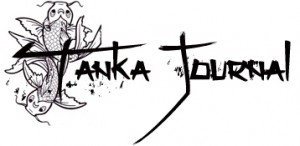Tanka is a poetry form which originated in Japan more than 13 centuries ago. In its purest form, tanka poems are most commonly written as expressions of gratitude, love, or self-reflection. Suitors would send a tanka to a woman the day after a date, and she would reply in kind. These were short messages (like secret letters) expressing love, desire, meaning, or gratitude. These poems often culminated in a transcendental message.
Today, much of that original purpose is lost in tanka poems. Poets include any subject that lends itself well to the tanka form. Some subjects simply don’t lend themselves to tanka. For example, when writing about the frustration of cooking bacon and eggs, other poetry forms should be employed. But when composing a poem which includes personal experience and a resulting profound feeling, then tanka is perfect. Tanka are not whimsical. They should include some deep meaning or purpose, and leave the reader with a strong feeling.
Tanka poems do not rhyme, and they are written in short lines, like haiku. In fact, tanka poems in English generally adhere to a syllabic count. There are five syllables (onji) in the first line, seven in the second, five in the third, and seven in lines four and five (5/7/5/7/7). Some poets hold that the syllable count is unimportant–what matters is that the form is suited to the subject. At Tanka Journal, we enjoy the syllable counts, but we are more concerned with poems having personal experience or a transcendental meaning (preferably both). See the Tanka Recipe and video below.
Because tanka poems are meant to be given to someone, they are written from the viewpoint of the poet. That does not mean they must be written in the first person, but the poet is ever-present, always writing to express personal feelings about the subject. Tanka poems are usually one long sentence broken purposefully between all five lines. Like any constrained poem, lines should not begin with articles (e.g., “a” or “the”) because articles reduce poetic compression and weaken the poetic impact of the form.
Tanka Recipe:
- Start with two lines addressing the experience of the poet, what they saw, heard, felt, tasted, smelled etc.
- Add a third line (called the turn or pivot) which changes the tone of the poem. It should relate separately to the two lines above and below.
- Finish with two lines which express a profound transcendental meaning that prompts reflection.
Watch this video for a fuller understanding:

